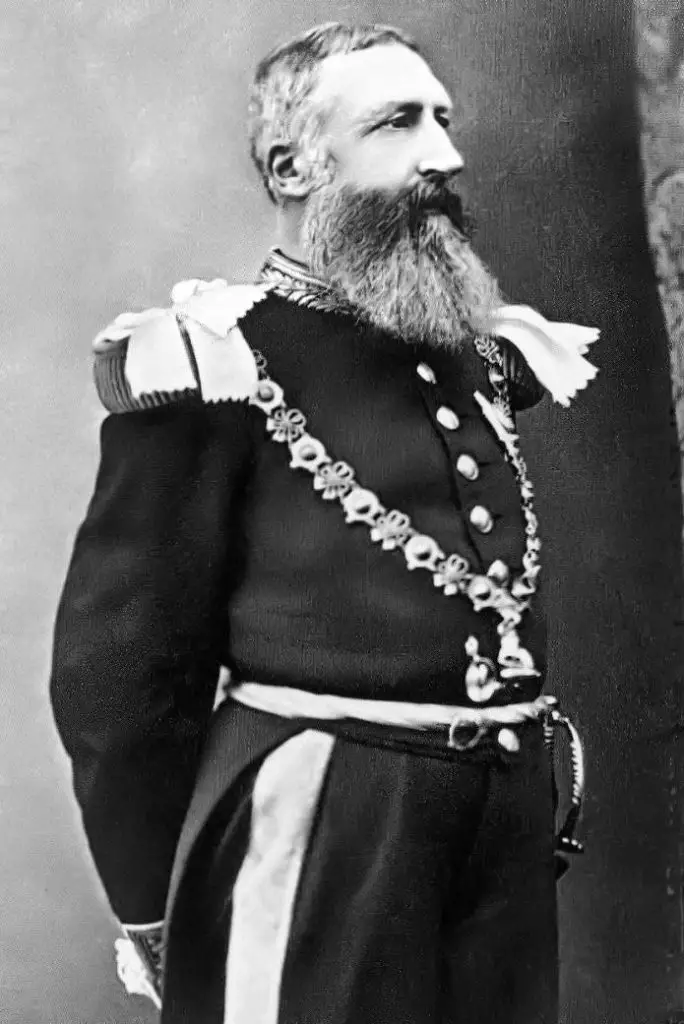King Leopold II, who ruled Belgium from 1865 to 1909, is known for many things.
Thanks to his huge number of construction projects, from buildings to public works in Belgium, he is remembered as the ‘Builder King’.
He remains the longest reigning monarch of Belgium, with 44 years under his belt.
Most infamously, perhaps, was that he was the founder and sole owner of the Congo Free State (1885-1908).
At one point, he was also very close to buying Sarawak.
Leopold II and Sarawak

When he was trying to expand his power outside Belgium, Leopold II was still the Duke of Brabant, the heir apparent to the throne.
He was looking for a place to colonise. As what he once said to his brother Prince Philippe, “The country must be strong, prosperous, therefore have a colonies of her own, beautiful and calm.”
Hence in February 1861, he asked one of his ambassadors to list down all the potential sites.
The island of Borneo stood out from the list.
Then he heard about James Brooke, and that the first White Rajah of Sarawak was financially struggling to rule the country.
With its rich natural resources from tropical timber to gold, Sarawak seemed to make an interesting and potentially profitable future colony for the Belgian king.
At that time Brooke was already in talks with financiers in Amsterdam looking how to set a company similar to Dutch East India Company.
Somehow, Leopold II managed to get in touch with Brooke, offering £130,000, an estimated £9.86 million at today’s rate.
What happened to the deal?
Brooke was supposed to have a meeting with Leopold II in Brussels…but he didn’t show up.
Not a gracious thing to do especially to someone who paid your ticket from Borneo to Europe.
According to the book Rogue Empires: Contracts and Conmen in Europe’s Scramble for Africa by Stephen Press, Brooke had several reservations.
First of all, Leopold II reportedly wanted to treat everyone in Sarawak as cheap labour. To him, there was no such thing as ‘native rights’.
In his words, “Submitting the lazy and corrupted peoples of the Far-East to forced labour is the only possible way to civilise and moralise them.”
Brooke however, wanted guarantees that there would be respect for the culture and customs of Sarawakians.
And of course, the White Rajah wanted economic development for Sarawak.
Thankfully, Brooke’s decision not to show up to the meeting effectively crossed Sarawak from King Leopold II’s list of potential colonies.
Nonetheless, Leopold II was inspired by Brooke. Looking at how the Brooke family ruled over Sarawak, the idea of buying, owning and ruling a country on his own became possible to him.
Besides Sarawak, he was also in the middle of other negotiations with the Dutch over Kalimantan and with Spain over the Philippines.
A narrow escape for Sarawak
After several attempts to buy his own colony, he finally managed to claim an area 76 times larger than Belgium in Central Africa.
He called it the Congo Free State, an area which Leopold II claimed to the international community he would extend philanthropic and humanitarian work under an NGO called International African Association.
The opposite was true.
In what would be known as the “Congo Horrors”, about 50% of the native population died due to being forced into labour (those who didn’t want to work had their houses and villages razed to the ground), disease and famine.
Rubber became the money-maker for Leopold, and so the enslaved population had to meet their quota or suffer the consequences, which included dismemberment, death and beatings.
The international community would finally hear of these atrocities and Leopold’s chokehold on the region would end in 1908. He died a year later, but not before he destroyed evidence of his activities there
Thankfully Brooke was far-sighted enough not to give Sarawak up to Leopold.
















